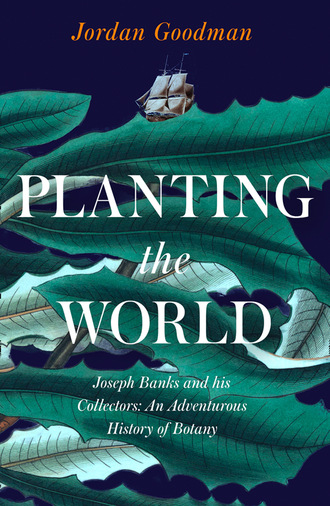
Полная версия
Planting the World

PLANTING THE WORLD
Joseph Banks and His Collectors: An Adventurous History of Botany
Jordan Goodman
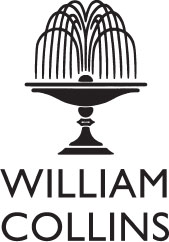
Copyright
William Collins
An imprint of HarperCollinsPublishers
1 London Bridge Street
London SE1 9GF
WilliamCollinsBooks.com
This eBook first published in Great Britain by William Collins in 2020
Copyright © Jordan Goodman 2020
Cover illustrations: Ship © British Library Board. All Rights Reserved/Bridgeman Images; Plant © Florilegius/Bridgeman Images
Jordan Goodman asserts the moral right to be identified as the author of this work
Maps by Martin Brown
A catalogue record for this book is available from the British Library
All rights reserved under International and Pan-American Copyright Conventions. By payment of the required fees, you have been granted the non-exclusive, non-transferable right to access and read the text of this e-book on-screen. No part of this text may be reproduced, transmitted, down-loaded, decompiled, reverse engineered, or stored in or introduced into any information storage and retrieval system, in any form or by any means, whether electronic or mechanical, now known or hereinafter invented, without the express written permission of HarperCollins
Source ISBN: 9780007578832
Ebook Edition © May 2020 ISBN: 9780007578849
Version: 2020-04-06
Dedication
For Cordelia
Epigraph
‘I envy you your situation within two miles of an Erupting Volcano you will easily guess I read your Letters with that Kind of Fidgetty anziety which continuously upbraids me for not being in a similar Situation I envy you I pity myself I blame myself & then begin to tumble over my Dried Plants in hopes to put such wishes out of my head which now I am tied by the leg to an armchair I must with diligence suppress’
Joseph Banks to William Hamilton, 4 December 1778
CONTENTS
Cover
Title Page
Copyright
Dedication
Epigraph
Maps
List of Illustrations
Dramatis Personae
Prologue
Introduction: Joseph Banks and Kew
PART I: TO EVERY CORNER OF THE EARTH
Preface
1. 1772: Masson Roams the Atlantic
2. 1779: Return to Botany Bay by Way of Southwest Africa
3. 1780: The First Circumnavigation of Archibald Menzies
4. 1782: The Brothers Duncan in Canton
5. 1786: The Madras Naturalists and Dreams of Oaxaca
PART II: FLOATING GARDENS AND THE COTTON CLUB
Preface
6. 1786: The First and Second Fleet
7. 1787: Anthony Pantaleon Hove in Gujarat
8. 1787: Mr Nelson’s Unfortunate Bounty Voyage
9. 1790: The Second Circumnavigation of Archibald Menzies
10. 1791: The Gardeners of the Providence
PART III: AN EMBASSY, A FREE TOWN AND A PLANT EXCHANGE
Preface
11. 1791: ‘An Intertropical Abode’: Afzelius in Sierra Leone
12. 1792: Macartney, Staunton and the China Embassy
13. 1793: The Accidental Naturalist in Qianlong’s Empire
14. 1794: To Calcutta and Back
PART IV: FIFTH QUARTER OF THE WORLD
Preface
15. 1795: The Farrier’s Son Finds Banks
16. 1800: Caley and Moowattin
17. 1800: Not Since the Endeavour
18. 1801: Australia Circumnavigated and Beyond
PART V: BOTANICAL DIPLOMACY AND THE TROPICS
Preface
19. 1803: William Kerr in Canton
20. 1812: And Still Not First-Hand
21. 1814: Accidentally in Brazil with Bowie and Cunningham
22. 1815: Lockhart Survives the Congo
Epilogue
Postscript
Picture Section
Abbreviations
Notes
Bibliography
Index
Acknowledgements
About the Author
Also by Jordan Goodman
About the Publisher
Maps
Key
The Atlantic
The Pacific
Indian Ocean, southeast Asia and China seas
China and Japan
India
Australia
Pacific Northwest
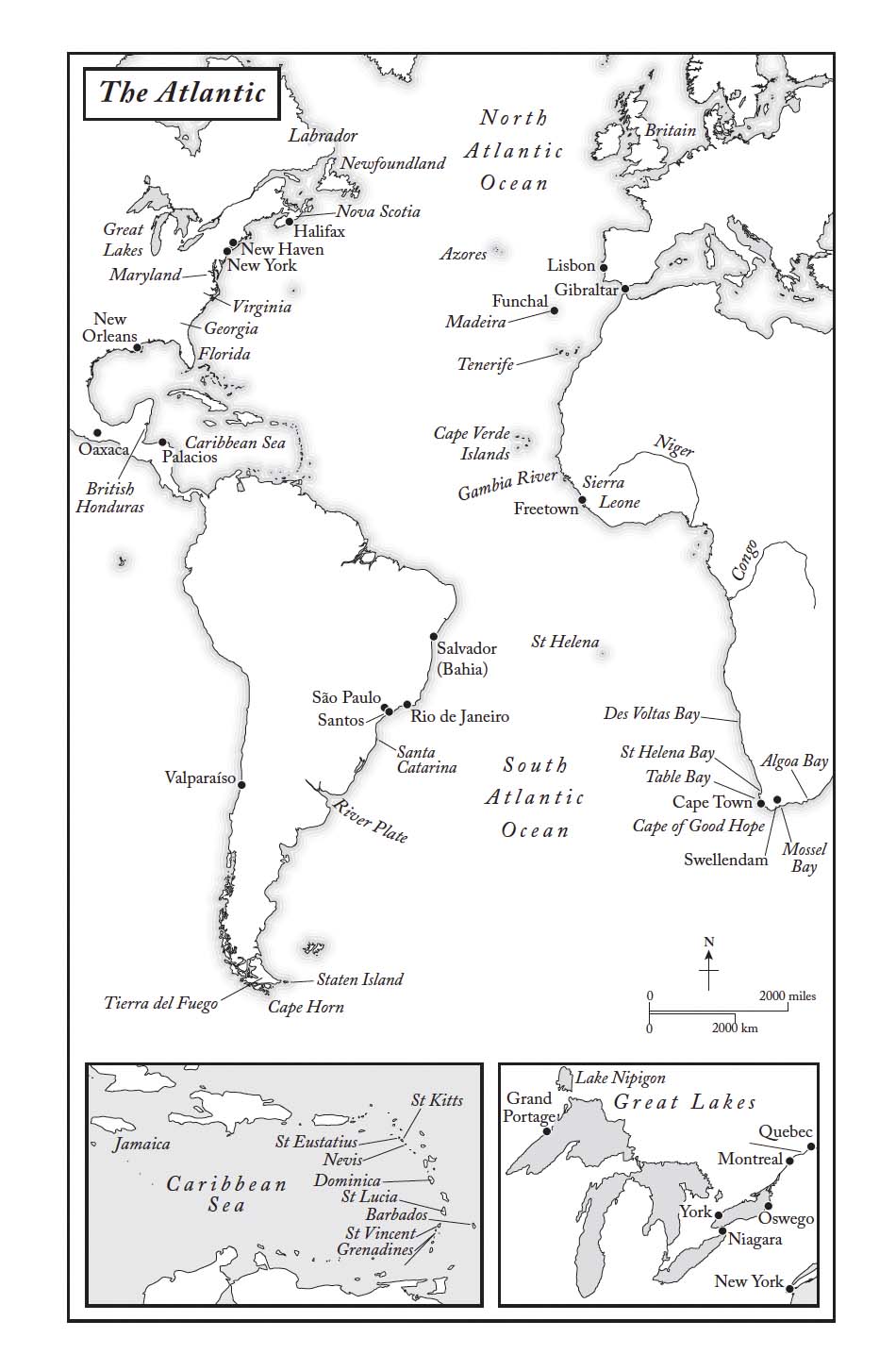
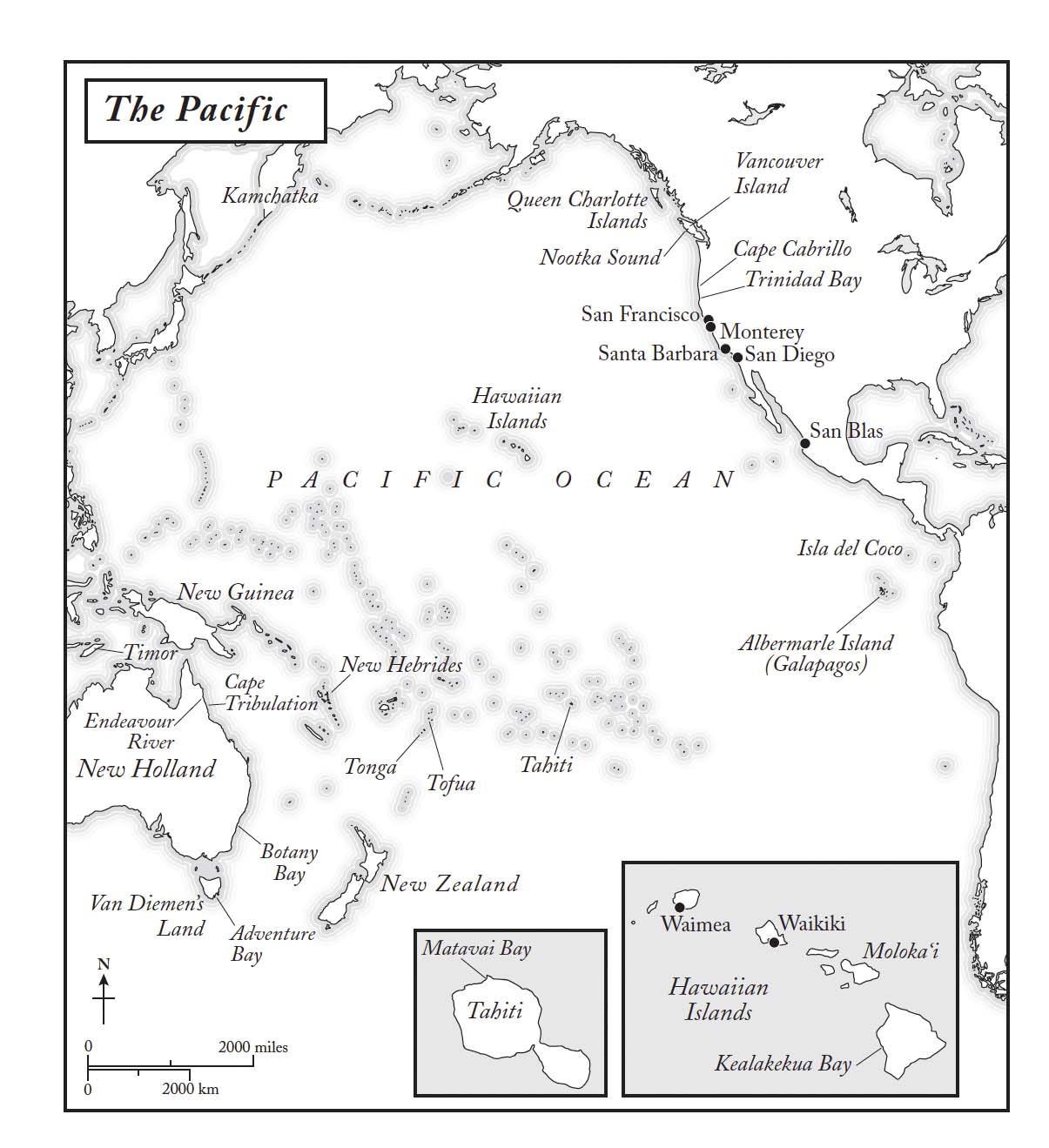
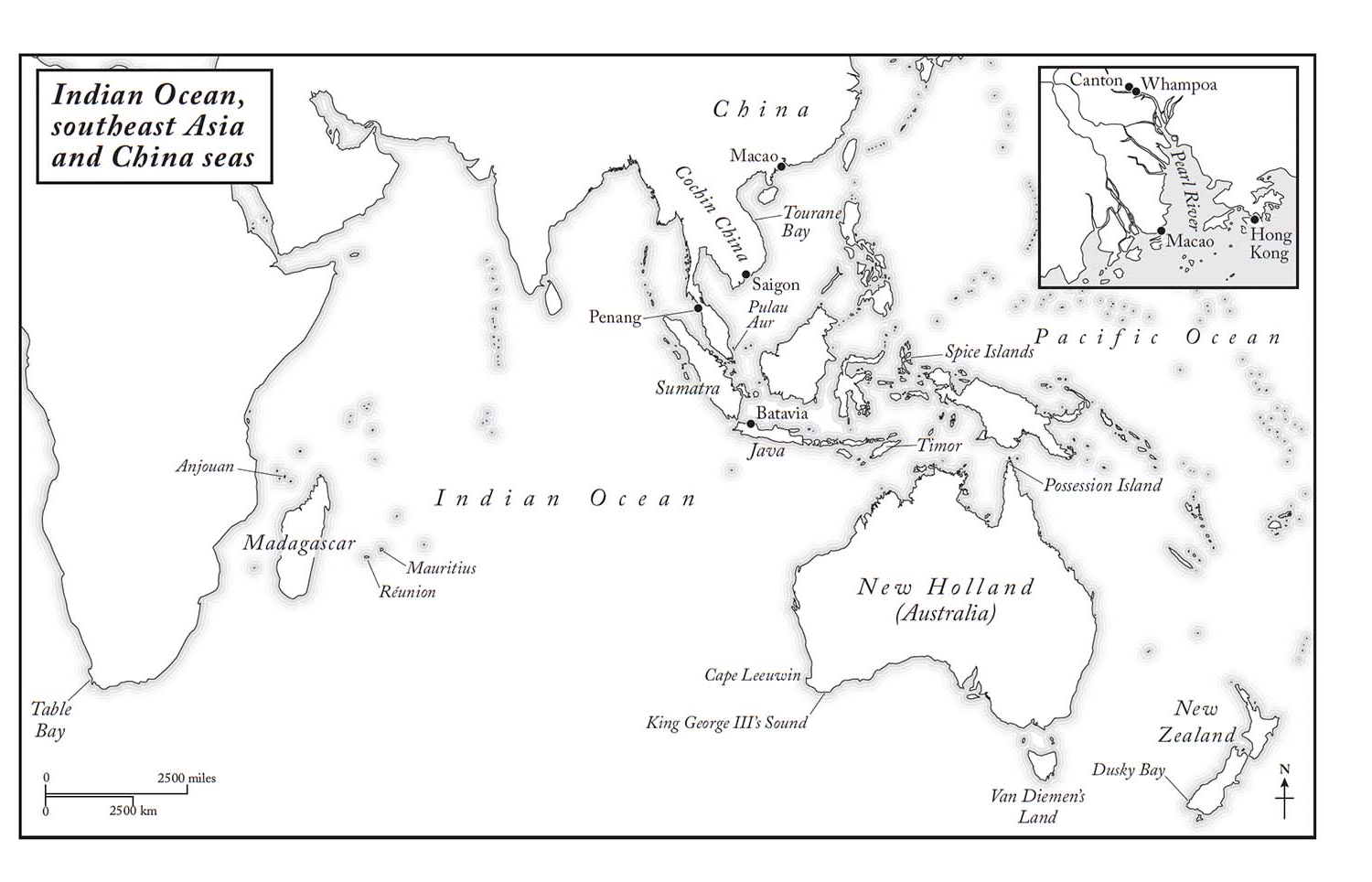
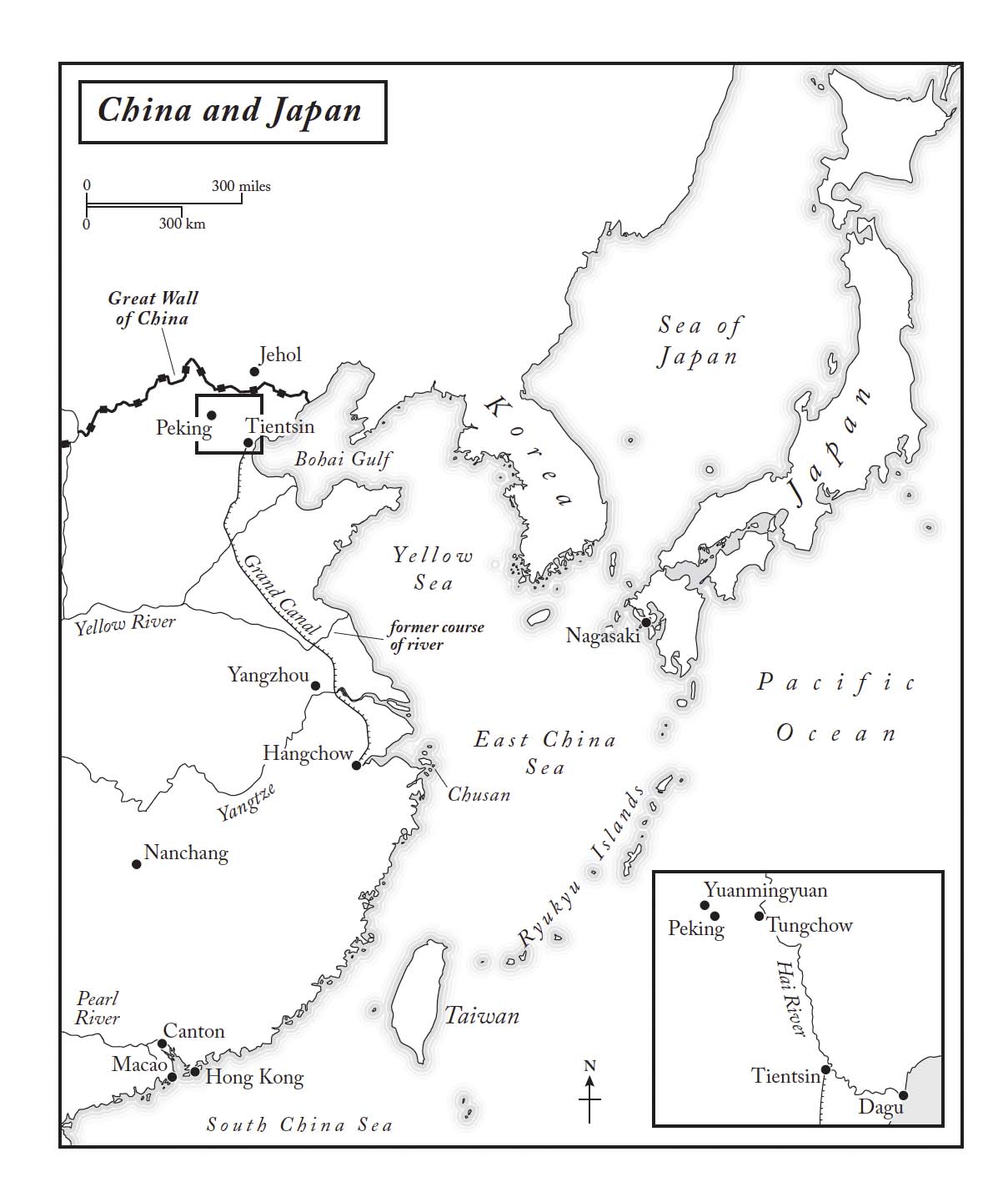
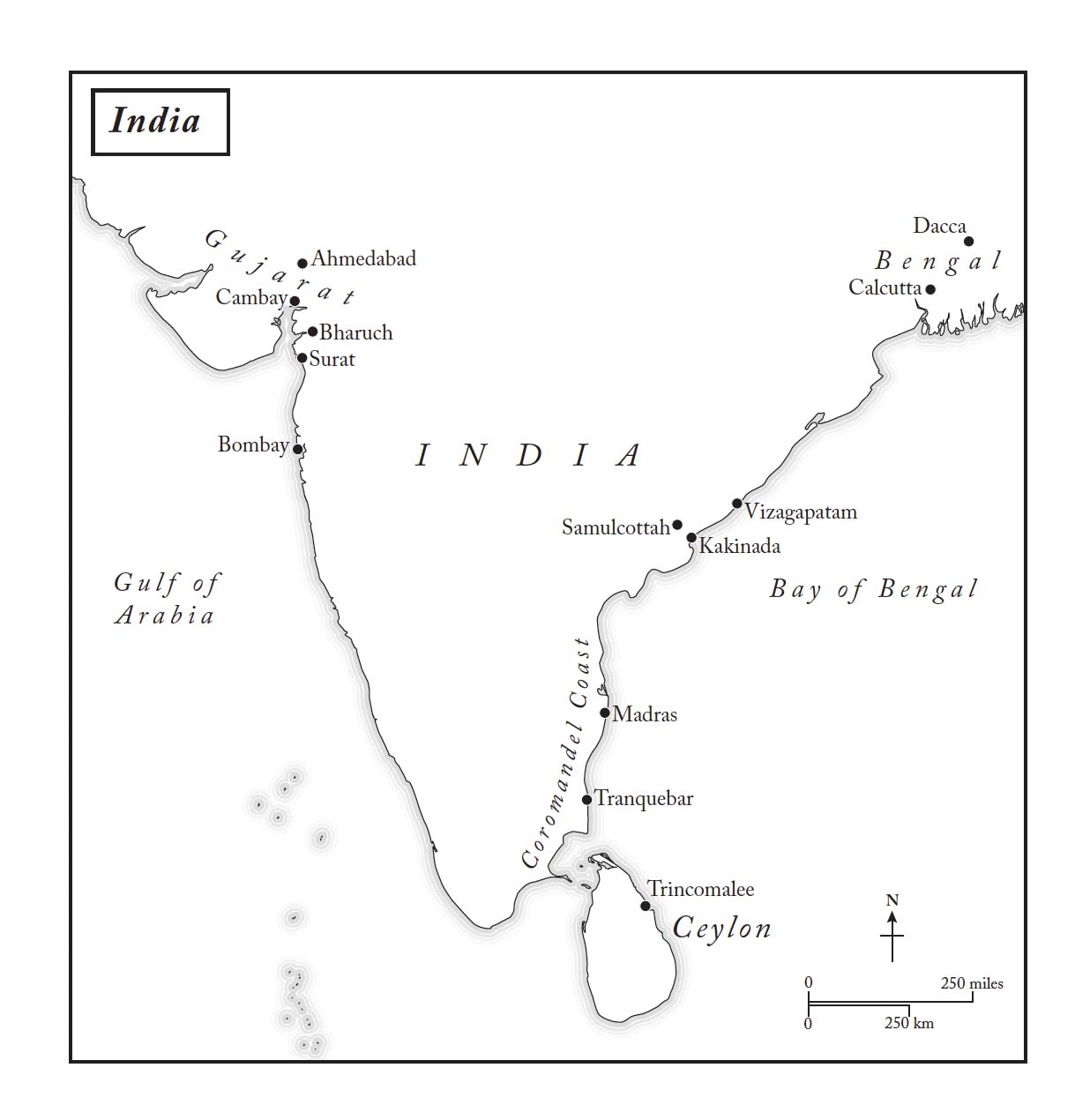
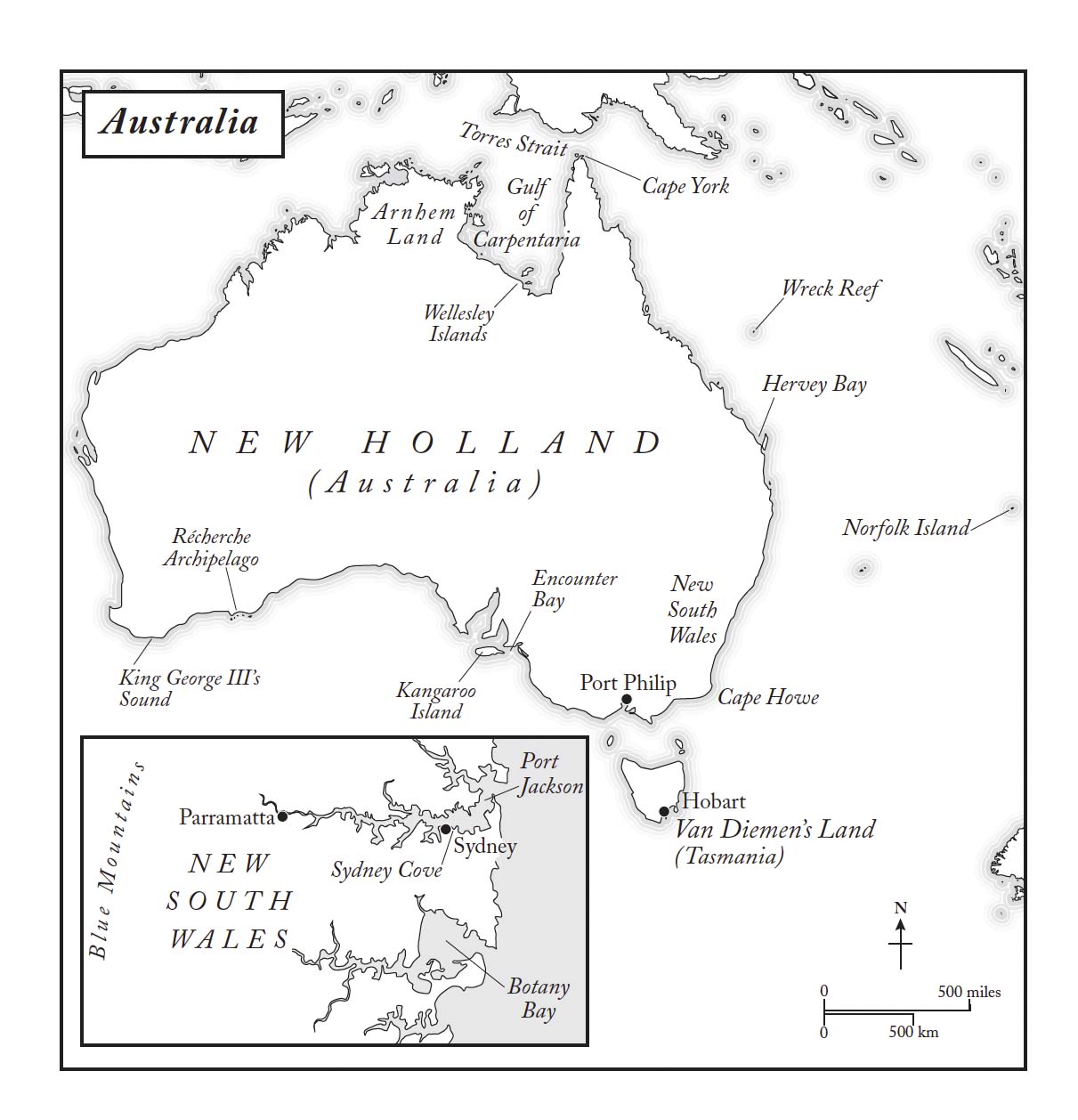
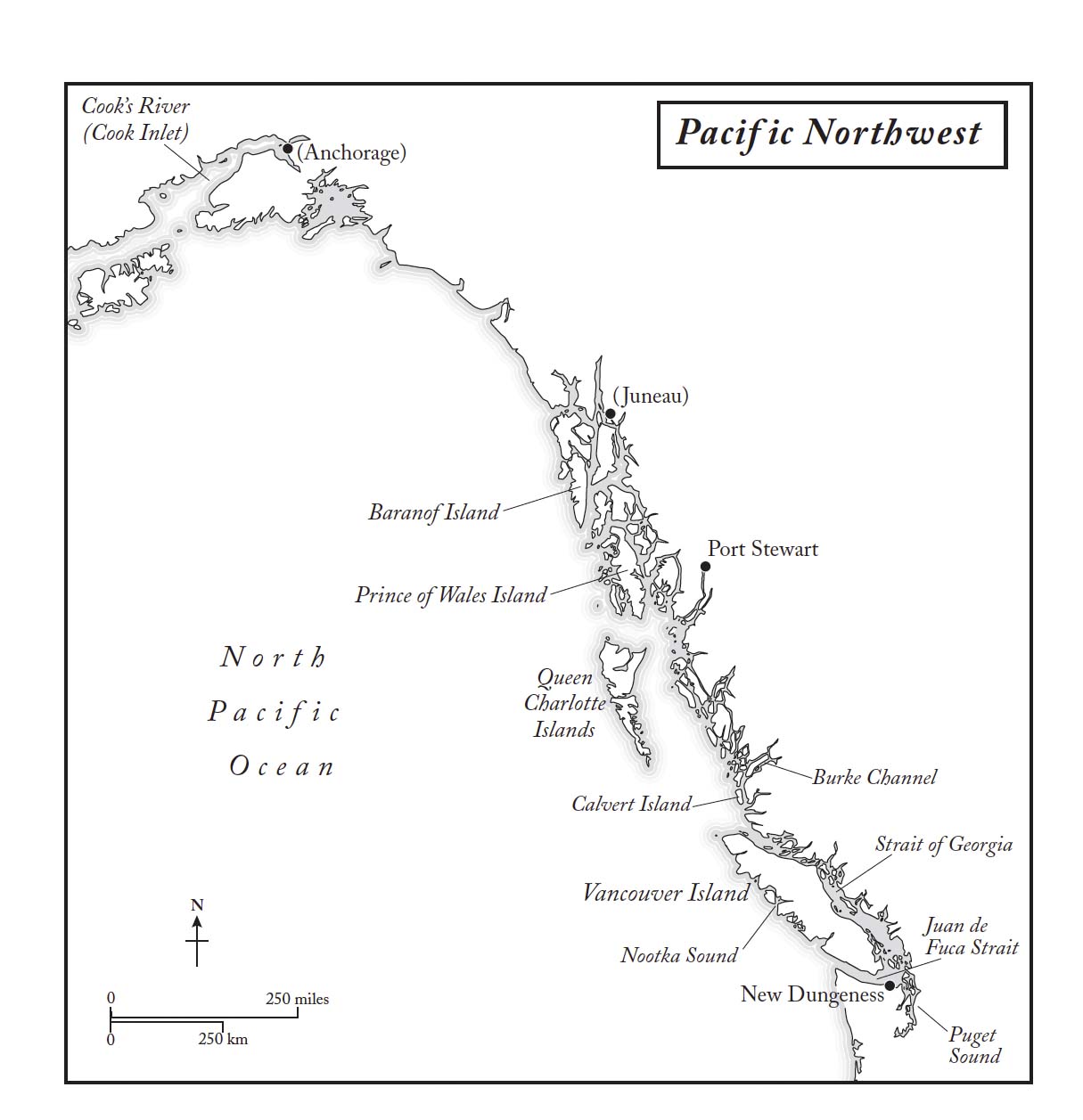
Illustrations
PEOPLE
Joseph Banks, oil portrait by Sir Thomas Lawrence, after 1795. (© Trustees of the British Museum)
Archibald Menzies, oil portrait by E.U. Eddis, 1836. (Linnean Society of London)
Francis Masson, oil portrait by George Garrard, 1887. (Linnean Society of London)
John and Alexander Duncan. (Courtesy of Cathy and Andrew Duncan)
Allan Cunningham, oil portrait, c.1835. (National Library of Australia PIC Screen 51 #R88)
Portrait of Sir John Barrow (1764–1848). (Wellcome Collection. Attribution 4.0 International CC BY 4.0)
Matthew Flinders, c.1800, watercolour miniature portrait. (Mitchell Library, State Library of New South Wales)
Captain William Bligh. (GL Archive/Alamy Stock Photo)
Robert Brown. Line engraving by C. Fox, 1837, after H. W. Pickersgill. (Wellcome Collection. Attribution 4.0 International CC BY 4.0)
George Macartney and George Staunton. Pencil, pen and ink, wash and watercolours. Images taken from Album of 372 Drawings of Landscapes, Coastlines, Costumes and Everyday Life Made during Lord Macartney’s Embassy to the Emperor of China. Originally published/produced in 1792–1794. (© British Library Board. All rights reserved/Bridgeman Images)
Daniel Charles Solander. Lithograph by Miss Turner after J. Zoffany (Wellcome Collection. Attribution 4.0 International CC BY 4.0)
Arthur Phillip, oil portrait, 1786, by Francis Wheatley. (Mitchell Library, State Library of New South Wales)
THINGS
Drawing of a flat peach made in Canton by John Bradby Blake and Mok Sau c.1773. (Oak Spring Garden Foundation, Upperville, Virginia)
Sketch by William Bligh of the plant nursery on HMS Bounty, 1787. (Sir Joseph Banks Collection, SS 1:1, Sutro Library, California State Library)
Sketch of plant cabin on HMS Guardian, 1789. (Sir Joseph Banks Collection, G 1:5, Sutro Library, California State Library)
The mutineers turning Lieutenant Bligh and part of the officers and crew adrift from HMS Bounty, painted and engraved by Robert Dodd, 1796. (Dixson Library, State Library of New South Wales)
HMS Providence and HMS Assistant at the Lizard, 1791, watercolour by Lieutenant George Tobin. (State Library of New South Wales, SAFE/PXA 563)
William Alexander’s watercolour drawing of an opuntia and cochineal from Rio de Janeiro, 1792. (Sir Joseph Banks Collection, En 1:20, Sutro Library, California State Library)
Breadfruit, 1792, watercolour by Lieutenant George Tobin. (State Library of New South Wales, SAFE/PXA 563)
White peony by an unknown Chinese artist, c.1794–6. (Courtesy of Cathy and Andrew Duncan)
A view of Funchal, Madeira, oil painting by William Hodges (1744–97). (Art Collection 2/Alamy Stock Photo)
Transplanting of the bread fruit trees from Otaheite, painting by Thomas Gosse, 1796. (Historic Images/Alamy Stock Photo)
PLACES
The library at the home of Joseph Banks, Soho Square, undated drawing attributed to Ralph Lucas (1796–1874). (Natural History Museum)
Kew Gardens: the Pagoda and Bridge, 1762, oil painting by Richard Wilson. (Yale Center for British Art, B1976.7.172, Paul Mellon Collection)
Cape Town, 1791, watercolour by Lieutenant George Tobin. (State Library of New South Wales, SAFE/PXA 563)
Adventure Bay, 1792, watercolour by Lieutenant George Tobin. (State Library of New South Wales, SAFE/PXA 563)
Point Venus, Matavai Bay, 1792, watercolour by Lieutenant George Tobin. (State Library of New South Wales, SAFE/PXA 563)
Presidio at Monterey, c.1792, watercolour by William Alexander (after John Sykes). (Edward E. Ayer Digital Collection, Newberry Library)
Friendly Cove, Nootka Sound, c.1792, watercolour by William Alexander. (Edward E. Ayer Digital Collection, Newberry Library)
Qianlong’s court (showing George Thomas Staunton on one knee in front of the Emperor), 1793, watercolour by William Alexander. (Huntington Library, Art Museum and Botanical Gardens. Gilbert Davis Collection)
A scene at Tientsin, 1793, engraving by William Alexander, The Costume of China, 1805.
View of Sir Edward Pellew’s Group, Gulf of Carpentaria, c.1802, oil painting by William Westall. (ZBA7944, © National Maritime Museum, Greenwich, London)
The European factories, Canton, 1806, oil painting by William Daniell. (Yale Center for British Art, B1981.25.210, Paul Mellon Collection)
The road to the home of Baron von Langsdorff on the outskirts of Rio de Janeiro, 1817–18, watercolour by Thomas Ender. (HZ 13845, Graphic Collection Academy of Fine Arts Vienna)
A panorama of São Paulo, 1817–18, watercolour by Thomas Ender. (HZ 13309, Graphic Collection, Academy of Fine Arts, Vienna)
Dramatis Personae
Clarke Abel (1780–1826). Surgeon to the Amherst embassy to China 1816–17
Adam Afzelius (1750–1837). Botanist, student of Linnaeus, Swedenborgian, hired by Sierra Leone Company and Banks’s plant collector in Sierra Leone 1792–6
William Aiton (1731–93). Head Gardener Kew 1759–93, Banks’s main contact at the royal garden
William Townsend Aiton (1766–1849). Son of the above and Head Gardener Kew 1793–1841, taking over his father’s duties and contact with Banks
William Alexander (1767–1816). Artist to the Macartney embassy to China 1792–4
John Allen (1773–1806). Lead miner, Banks’s appointed mineralogist on HMS Investigator 1801–3
William Amherst (1773–1857) 1st Earl Amherst of Arracan. Leader of the third British embassy to China (Amherst embassy) 1816–17, Governor-General of India 1823–8
James Anderson (1738–1809). Physician General East India Company Madras, naturalist, first person to bring cochineal to Banks’s attention in 1786
George Austin (?–1790). Banks’s appointed gardener on HMS Guardian 1789
Joseph Banks (1743–1820). Botanist, President of the Royal Society
Sarah Sophia Banks (1744–1818). Sister of Joseph Banks
(Lady) Dorothea Banks (1758–1828). Wife of Joseph Banks
Francis Baring (1740–1810). Banker, head of Baring and Co. London’s chief merchant bank, Director 1779–1810 and Chairman East India Company 1792–3, responsible for the Company’s role in the Macartney embassy to China 1792–4
Francis Louis Barrillier (1773–1853). Army officer, surveyor in New South Wales 1800–3
John Barrow (1764–1848). Comptroller on Macartney embassy to China 1792–4, Secretary to George Macartney Cape Colony 1797–1804, Second Secretary to the Admiralty 1804–45
Henry Bathurst (1762–1834) 3rd Earl Bathurst. Politician, Secretary of State for War and the Colonies 1812–27
Nicolas Thomas Baudin (1754–1803). Naval officer, commander French exploration vessel Le Géographe on its intended circumnavigation of Australia 1800–3, met Matthew Flinders in present-day South Australia in April 1802
Franz Bauer (1758–1840). Botanical artist active at Kew
Ferdinand Bauer (1760–1826). Botanical artist, brother of the above, Banks’s appointed artist on HMS Investigator 1801–3
Lord Beauchamp. See Francis Seymour Conway
Andreas Berlin (1746–73). Botanist, student of Linnaeus, plant collector in Sierra Leone alongside Henry Smeathman 1773
Charles Blagden (1748–1820). Physician, Secretary to the Royal Society 1784–97, Banks’s confidant
John Bradby Blake (1745–73). Supercargo East India Company Canton 1770–3, co-producer of hybrid Chinese-British botanical drawings
William Bligh (1754–1817). Naval officer, commander HMS Bounty and HMS Providence 1787–9 and 1791–3 respectively, Fourth Governor of New South Wales 1806–8
Essex Henry Bond (1762–1819). Naval officer, commander East India Company ship Royal Admiral
Jacob Bosanquet (1755–1828). Director from 1782, Deputy-Chairman Court of Directors 1797, 1802, 1810, Chairman Court of Directors 1798, 1803, 1811 East India Company
James Bowie (c.1789–1869). Gardener, Banks’s plant collector in Brazil 1814–16 and at the Cape 1816–23
William Broughton (1762–1821). Naval officer, commander HMS Chatham 1791–3
Robert Brown (1773–1858). Botanist, Banks’s plant collector in Australia on HMS Investigator 1801–3, Banks’s librarian 1810–20
Earl of Buckinghamshire. See Robert Hobart
Charles Bunbury (1740–1821). Politician, Chairman Bunbury Committee on crime and punishment 1778–9
David Burton (?–1792). Gardener, Banks’s plant collector in Australia
George Caley (1770–1829). Gardener, botanist, Banks’s plant collector in Australia 1800–10, Superintendent St Vincent Botanic Garden 1816–22
John Call (1731–1801). Engineer, politician, promoted transportation and the establishment of penal colonies
Duncan Campbell (1726–1803). Merchant, shipowner, contractor for transportation and for the provision of convict hulks
Lord Castlereagh (1769–1822). Politician, President of the Board of Control 1802–6
Charles Cathcart (1759–88). Military officer, politician, leader of the first British embassy to China (Cathcart embassy) 1787–8
Henry Chamberlain (1773–1829). Diplomat, British consul-general in Brazil, an important contact for James Bowie and Allan Cunningham while plant collecting in Brazil
John Clarkson (1764–1828). Naval officer, abolitionist, Governor of Sierra Leone 1792, responsible for bringing the first settlers from Nova Scotia
David Collins (1756–1810). Military officer, judge advocate of New South Wales 1788–96
James Colnett (1753–1806). Naval officer, fur trader, commander merchant vessel Prince of Wales 1786–8
Francis Seymour Conway (1743–1822) Lord Beauchamp. Politician, headed the Beauchamp Committee hearings into transportation 1785
James Cook (1728–79). Naval officer, explorer, commander HMS Endeavour 1768–71, HMS Resolution 1772–5, 1776–9
John Cranch (1758–1816). Naturalist on HMS Congo 1816
John Crosley (1762–1817). Astronomer on HMS Investigator 1801–3
Allan Cunningham (1791–1839). Gardener, Banks’s plant collector in Brazil 1814–16 and Australia 1816–31
Alexander Dalrymple (1737–1808). Cartographer, First Hydrographer of the British Admiralty 1795–1808
Nathaniel Dance (1748–1827). Naval officer, commander East India Company ship Earl Camden 1802–4 engaging French fleet in the Battle of Pulo Aura 1804
William Devaynes (1730–1809). Politician, merchant, banker, Chairman East India Company 1770–1807 passim
James Dickson (c.1738–1822). Botanist, nurseryman in Covent Garden
George Dixon (1748–95). Naval officer, fur trader, commander merchant vessel Queen Charlotte 1785–8
Jonas Dryander (1748–1810). Botanist, Banks’s librarian 1782–1810
Alexander Duncan (1758–1832). Surgeon to the East India Company Canton 1788–97, Banks’s plant collector in Canton during this period
John Duncan (1751–1831). Brother of the above, Surgeon to the East India Company Canton 1783–8, Banks’s plant collector in Canton during this period
Henry Dundas (1742–1811) 1st Viscount Melville. Politician, Treasurer of the Navy 1782–1800, Home Secretary 1791–4, President Board of Control 1793–1801, Secretary of State for War 1794–1801, First Lord of the Admiralty 1804–5
Hinton East (?–1792). Planter, botanist, Receiver-General of Jamaica 1779, Banks’s important contact in Jamaica
John Ellis (c.1710–76). Naturalist, early proponent and supporter of the Linnaean classificatory system
Richard Cadman Etches (1744–1817). Merchant, entrepreneur, formed the King George’s Sound Company the first British company to trade for furs in the Pacific Northwest 1785
Matthew Flinders (1774–1814). Naval officer, commander HMS Investigator 1801–3
George III (1738–1820). King of the United Kingdom 1760–1820
Hugh Gillan (?1745–98). Physician to the Macartney embassy to China 1792–4, plant collector in Brazil and China on this mission
Peter Good (?–1803). Gardener, Banks’s plant collector in Calcutta 1794, Banks’s appointed gardener and plant collector on HMS Investigator
William Goulburn (1784–1826). Politician, Under-Secretary of State for War and the Colonies 1812–21
Erasmus Gower (1742–1814). Naval officer, commander HMS Lion conveying members of the Macartney embassy to and from China 1792–4
Charles Green (1734–71). Astronomer on HMS Endeavour 1768–71
William Grenville (1759–1834) 1st Baron Grenville. Politician, Home Secretary 1789–91
Charles Francis Greville (1749–1809). Politician, antiquarian, collector
William Hamilton (1730–1803). Antiquarian, collector, British Ambassador to Naples 1764–1800
George Harrison (1767–1841). Civil servant, Assistant Secretary of the Treasury 1805–26
Lord Hawkesbury. See Charles Jenkinson
Robert Hobart (1760–1816) 4th Earl of Buckinghamshire. Politician, President of the Board of Control 1812–16
James Hooper (?–1830/1). Gardener, Banks’s plant collector in China on the Amherst embassy 1816–17, head gardener Buitenzorg (now Bogor) Botanic Gardens 1817–30
John Hope (1725–86). Physician, Professor of Botany and King’s Botanist University of Edinburgh 1761–86
Anthony Pantaleon Hove (?–1830). Gardener, Banks’s plant collector in southwest Africa 1786, Gujarat 1787–8
John Hunter (1737–1821). Naval officer, Second Governor of New South Wales 1795–1800
Charles Jenkinson (1729–1808) Lord Hawkesbury. Politician, President of the Board of Trade 1786–1804
Robert Banks Jenkinson (1770–1828) 2nd Earl of Liverpool. Politician, Prime Minister of the United Kingdom 1812–28
William Jones (1746–94). Jurist, philologist, orientalist, judge Supreme Court Calcutta 1783–94
Engelbert Kaempfer (1651–1716). Naturalist, physician to the Dutch East India Company Nagasaki 1690–2
Paul Ke (c.1752–?). Missionary, Chinese interpreter to Macartney embassy to China 1792–4
William Kerr (1779–1814). Gardener, Banks’s plant collector in Canton 1803–10, Superintendent Ceylon Botanic Garden 1810–14
James King (1750–84). Naval officer, commander HMS Discovery on James Cook’s Third Voyage 1779–80
John King (1759–1830). Civil servant, Permanent Under-Secretary of State at the Home Department 1791–1806
Philip Gidley King (1758–1808). Naval officer, Third Governor of New South Wales 1800–6
Johan Gerhard Koenig (1728–85). Pharmacist, physician, botanist, plant collector on India’s Coromandel Coast 1768–85
Robert Kyd (1746–93). Military officer, Superintendent Calcutta Botanic Garden 1787–93
David Lance (c.1755–1820). Supercargo East India Company in Canton 1775–89 and 1803–4
Baron Georg Langsdorff (1774–1852). Physician, naturalist, diplomat in Brazil 1813–30
William Elford Leach (1791–1836). Zoologist, assistant librarian British Museum 1813–22
James Lee (1715–95). Nurseryman, joint owner Vineyard Nursery Hammersmith 1745–95
Jacob Li (c.1752–?). Missionary, Chinese interpreter to Macartney embassy to China 1792–4
James Lind (1736–1812). Astronomer, physician, accompanied Banks to Iceland 1772
Carl Linnaeus (1707–78). Botanist, physician, Professor of Medicine Uppsala University 1741–72, Rector Uppsala University 1750–71, established modern botanical nomenclature
Charles-Alexandre Linois (1761–1848). Naval officer, commander of the Marengo and the French fleet during the Battle of Pulo Aura 1804
Lord Liverpool. See Robert Banks Jenkinson
David Lockhart (1786–1845). Gardener, Banks’s plant collector on HMS Congo 1816, Superintendent Trinidad Botanic Gardens 1818–45
Israel Lyons (1739–75). Botanist, mathematician, astronomer, an early exponent of Linnaean taxonomy and nomenclature, taught (1764) and inspired Banks
George Macartney (1737–1806). Diplomat, Governor of Madras 1781–5, leader second British embassy to China (Macartney embassy) 1792–4, Governor of the Cape Colony 1796–8
James Main (c.1765–1846). Gardener, plant collector in China 1790s
William Marsden (1754–1836). Orientalist, First Secretary of the Admiralty 1804–7
Nevil Maskelyne (1732–1811). Mathematician, Astronomer Royal 1765–1811
Francis Masson (1741–1805). Kew gardener, plant collector at the Cape, the Atlantic and Caribbean, the Mediterranean and North America.
James Matra (1746–1806). Sailor, diplomat, promoter of settlement in New South Wales 1783–5
Murray Maxwell (1775–1831). Naval officer, commander HMS Alceste on the Amherst embassy to China 1816–17
Archibald Menzies (1754–1842). Assistant surgeon Royal Navy, gardener, botanist, Banks’s plant collector in the Pacific on the Prince of Wales 1786–9 and on HMS Discovery 1791–4



